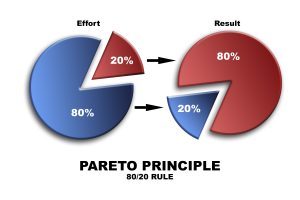Predictive Analytics: The Key to Risk Mitigation in Sourcing
As globalization continues to transform industries worldwide, sourcing companies are increasingly leveraging predictive analytics to streamline operations and mitigate risks. This powerful tool enables these organizations to make more informed decisions and manage uncertainties better, particularly within supply chain management.
Understanding Predictive Analytics in Sourcing
Predictive analytics has proven to be a game-changer for global sourcing companies. It utilizes a myriad of statistical techniques, differing from machine learning to predictive modeling, all designed to sift through current and past data to anticipate future results. The beauty of predictive analytics rests in its adaptability and broad impacts within the sourcing sphere.
Applied to sourcing, predictive analytics serves as a powerful forecaster, enabling businesses to foresee possible market directions, supply chain issues, or inventory necessities in advance. This advanced knowledge is key in sidestepping problems and capitalizing on opportunities just in time.
Picture a sourcing firm watching out for potential supply chain disruptions. By scrutinizing past data and patterns, predictive analytics may predict future disturbances. This helps the firm to get ready and put contingency plans in place, drastically cutting down potential operation disruptions.
Predictive analytics is equally valuable in forecasting market trends. Firms can study market dynamics and extract helpful knowledge to mould their strategies. Such understanding can bring about proactive tweaks in supply chains to satisfy expected demand, ensuring suitable inventory levels and preventing expensive overstock or stockouts. Predictive analytics in sourcing also gives companies a peek into the future. It’s not about what was or what is—it’s about what could be. This knowledge lets sourcing firms stay flexible, ready to adapt and handle what comes next.
How U.S. Sourcing Companies Utilize Predictive Analytics?
Procurement companies in the USA see predictive analytics as a smart strategy. They use it to spot patterns in past data and guess future needs. This lets them adjust the supply chain ahead of time, making things more efficient and smooth.
But it’s not just about predicting demands. Predictive analytics also help find and reduce risk of supply chain issues. Looking at past trends, they can predict problems like supplier delays or geopolitical hang-ups. Early heads up allow firms to plan ahead and lessen the effects of these hiccups on their business.
Predictive analytics help spot ways to cut costs too. It looks at trends in sourcing expenses, shipping charges, and supplier dependability. This lets companies make choices that boost profits while not giving up quality or speed.
U.S. companies find new ways to make supply chains better by using predictive analytics. They pair this with modern tools like IoT and blockchain. This gives them clear forecasts and real-time information. Predictive analytics is vital for these companies, not just a trend. It helps them make smart decisions, stay strong, and stay ahead in this fast-changing world. As data becomes more important, predictive analytics will play a critical part in their strategy.
The Chinese Approach to Predictive Analytics in Sourcing
Predictive analytics in Chinese sourcing companies is full of new ideas and smart ways of doing things. Known as leading companies in sourcing, they use predictive analytics in making sense of their supply chains. Their plan includes very advanced algorithms. They examine past and present data, discovering patterns and trends that suggest what’s coming next.
Chinese sourcing companies use predictive analytics to manage the challenging international trade scene in unique ways. By studying global trade data, tariffs, exchange rates, and other factors, they forecast changes in world markets. With this knowledge, they can adapt their supply chain strategies in advance, guaranteeing a smooth supply of goods even when the market is unstable.
Chinese firms that source goods globally are using tools to guess what’s next. They use powerful technology to see how reliable their vendors are. This way, they can deal with problems before they happen. They stay super fast and competitive. They’re also the first to mix these guess-tools with new tech. Stuff like artificial intelligence, IoT, and blockchain. This blend makes strong, active systems. It gives them information in an instant. It helps them guess faster and smarter.
The Future of Predictive Analytics in Sourcing
When we look at what predictive analytics might do for sourcing in the future, it’s quite exciting. This growing field is ready to take big steps forward, with new developments just around the corner. As technology gets better, predictive models are set to become more complex and more accurate, making forecasts even more exact.
Machine learning, a key predictive analytics component, is on the brink of fast growth. Future algorithms are likely to learn and adapt quicker, resulting in higher accuracy in predictions and enriched insights. The employment of these improved algorithms will offer sourcing firms more detailed data, supporting top-notch decision making and superior risk control.
Alongside these leaps, predictive analytics will further intertwine with rising technologies. Blockchain, with its safe, see-through deals, along with the Internet of Things (IoT) and it’s network of interacting devices streaming live data, will enhance predictive analytics. This tech and predictive analytics mix will create tougher, adaptable systems, churning out real-time insights and spot-on predictions.
Predictive analytics is gearing up to leave a major mark on sourcing, influencing everything from demand predictions to supplier control. This prediction power is crucial for managing the demanding and unpredictable global markets, keeping sourcing firms one step ahead. As this strong tool evolves, we are nearing a new sourcing age – a data-driven one, fueled by predictive analytics, and characterized by forward-thinking, robust supply chain management. The future is undoubtedly full of potential.
Conclusion
So what’s this all mean? Predictive analytics is like a new tool for sourcing companies in the U.S. and China. It’s changing things up, helping to predict stuff like market trends, how suppliers will act, and possible hiccups in the supply chain. It’s super useful – it lets companies see issues before they happen, make smart choices, and stay ahead of their competitors. Predictive analytics is getting better and sharper, making a big impact on sourcing. We’re moving toward a time when supply chains will be tough, smooth-running, and smart. We’re starting a new phase in sourcing – it’s all about data, guided by predictive analytics, and all based on looking ahead and managing supply chains actively. And there’s a lot to look forward to on this journey.








